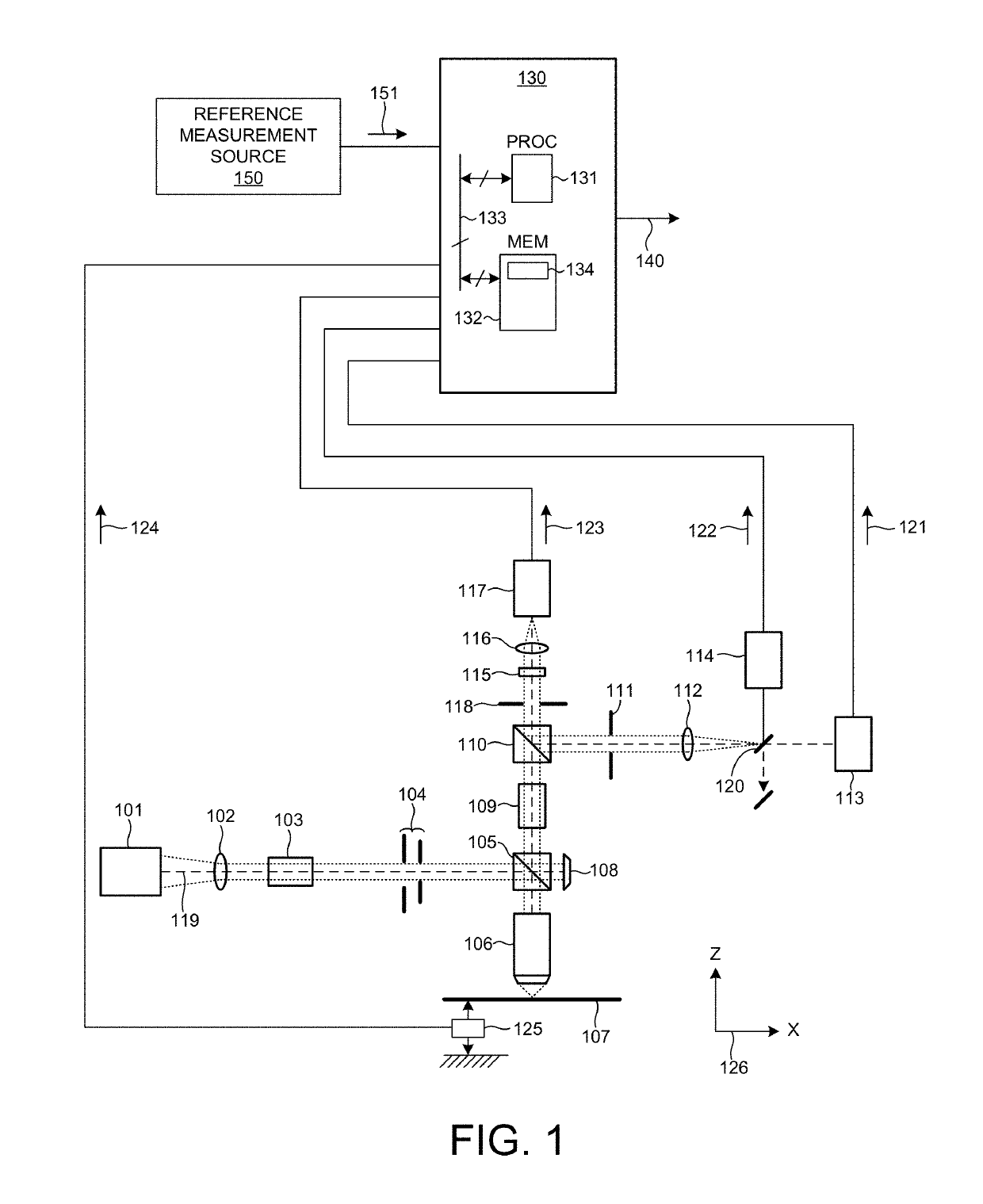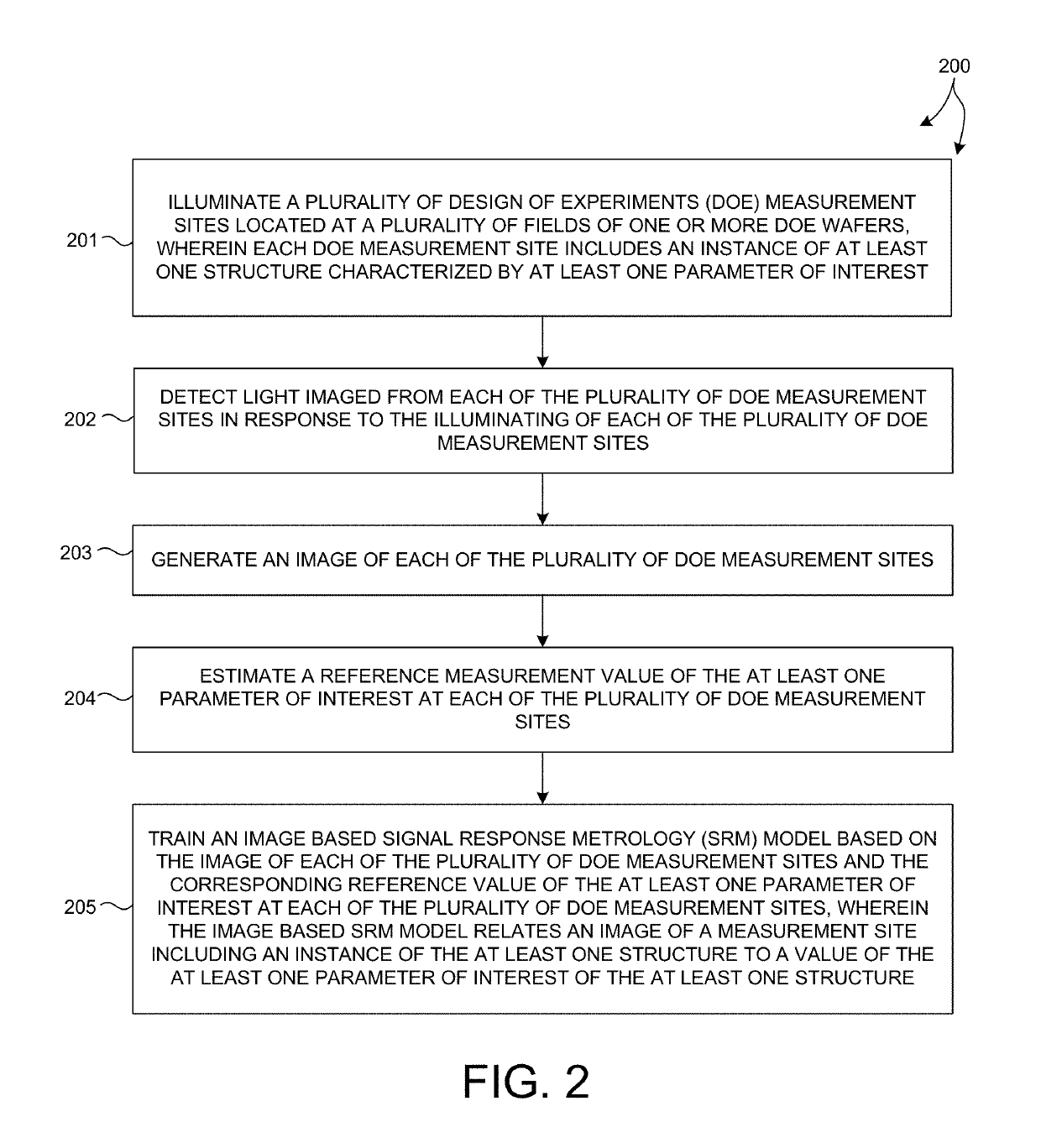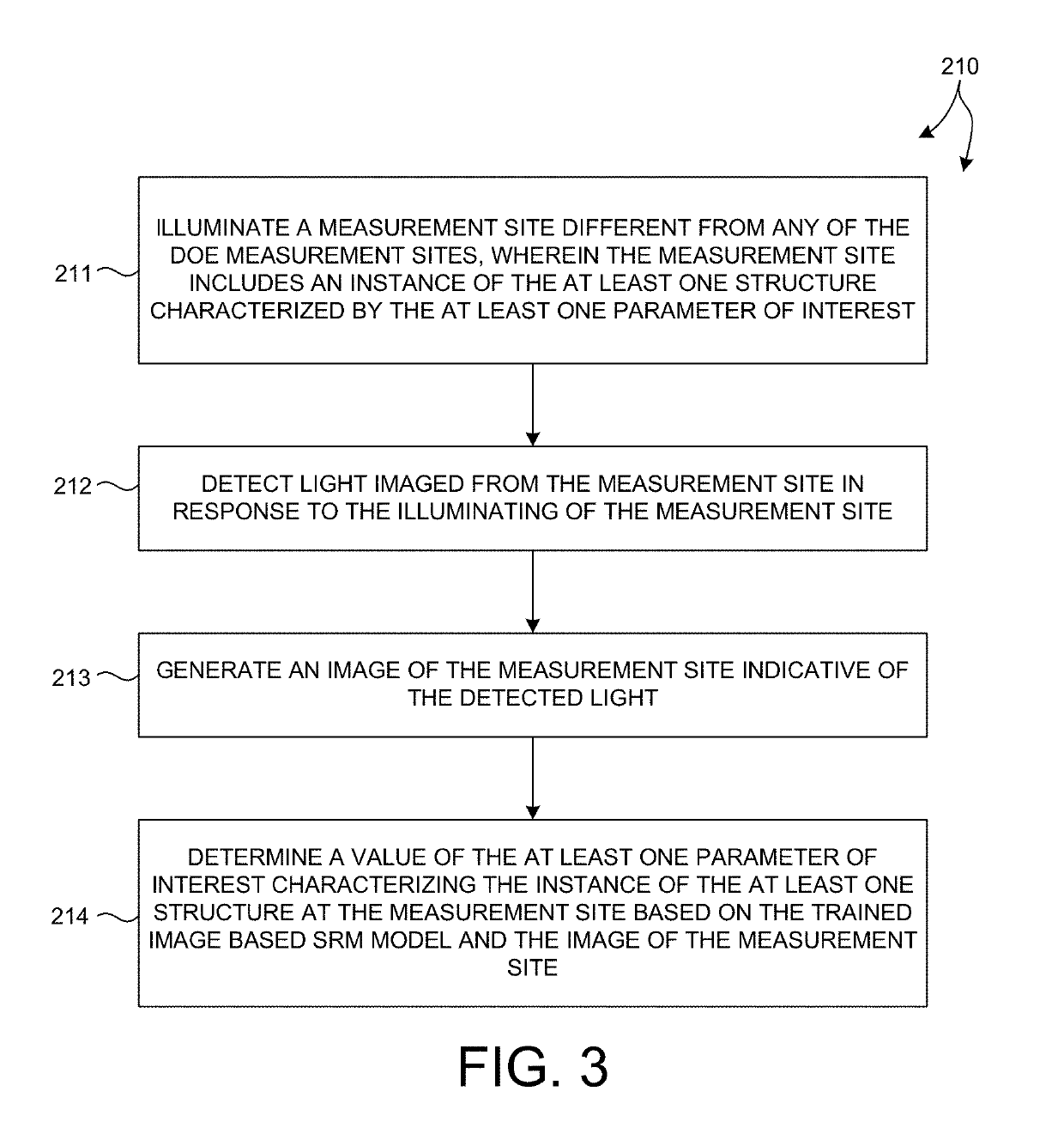Model-based metrology using images
a model-based metrology and image technology, applied in the field of model-based measurements, can solve the problems of inability to reliably perform traditional image-based metrology algorithms with arbitrary targets or device structures, and the number of locations that can be measured for a given wafer throughput requirement is limited, so as to achieve the effect of quick and accurate estimation of structural parameters
- Summary
- Abstract
- Description
- Claims
- Application Information
AI Technical Summary
Benefits of technology
Problems solved by technology
Method used
Image
Examples
Embodiment Construction
[0024]Reference will now be made in detail to background examples and some embodiments of the invention, examples of which are illustrated in the accompanying drawings.
[0025]Methods and systems for combining the information content present in measured images of semiconductor wafers with additional measurements of particular structures within the measured images to quickly and accurately estimate structural parameters of interest are presented herein.
[0026]FIG. 1 illustrates a system 100 for measuring characteristics of a specimen in accordance with the exemplary methods presented herein. As shown in FIG. 1, the system 100 may be used to perform imaging and non-imaging measurements of one or more structures formed on a specimen 107. In this aspect, the system 100 may configured as a beam profile reflectometer (BPR), a field imaging system, and a spectroscopic reflectometer (SR). Alternatively, system 100 may be configured as a BPR, a spectroscopic ellipsometer (SE), and a field imagi...
PUM
| Property | Measurement | Unit |
|---|---|---|
| size | aaaaa | aaaaa |
| dimension | aaaaa | aaaaa |
| critical dimension | aaaaa | aaaaa |
Abstract
Description
Claims
Application Information
 Login to View More
Login to View More - R&D
- Intellectual Property
- Life Sciences
- Materials
- Tech Scout
- Unparalleled Data Quality
- Higher Quality Content
- 60% Fewer Hallucinations
Browse by: Latest US Patents, China's latest patents, Technical Efficacy Thesaurus, Application Domain, Technology Topic, Popular Technical Reports.
© 2025 PatSnap. All rights reserved.Legal|Privacy policy|Modern Slavery Act Transparency Statement|Sitemap|About US| Contact US: help@patsnap.com



